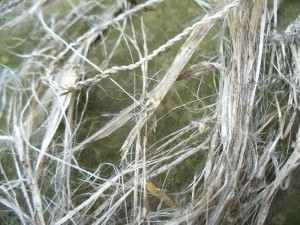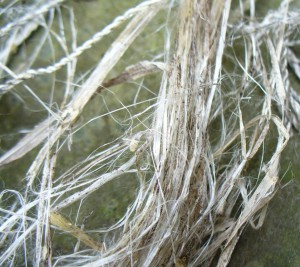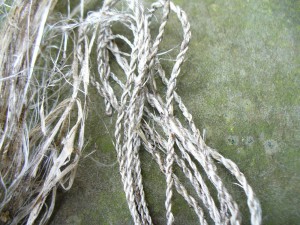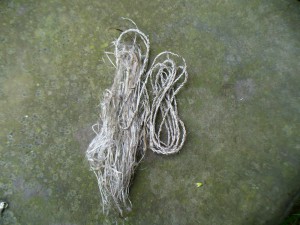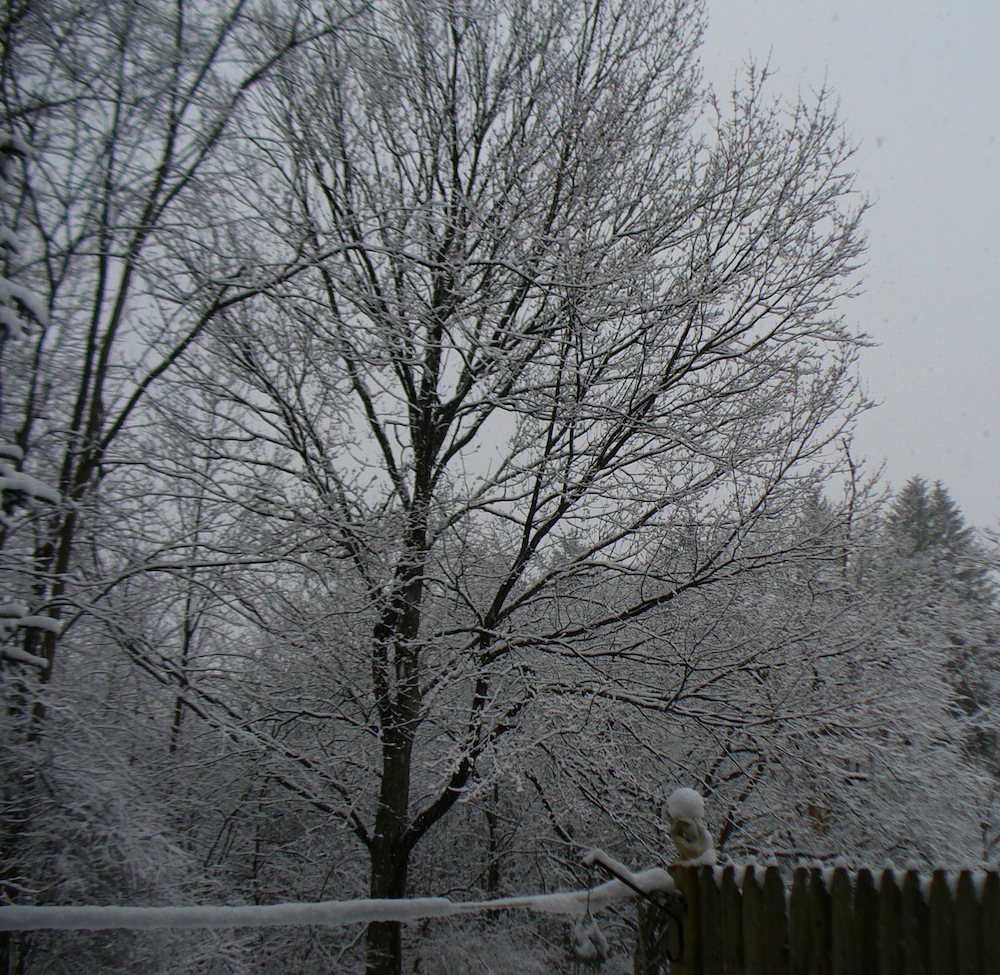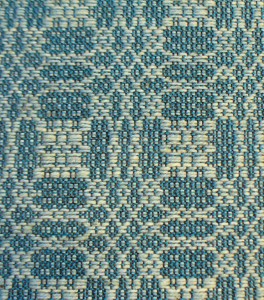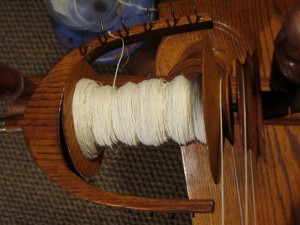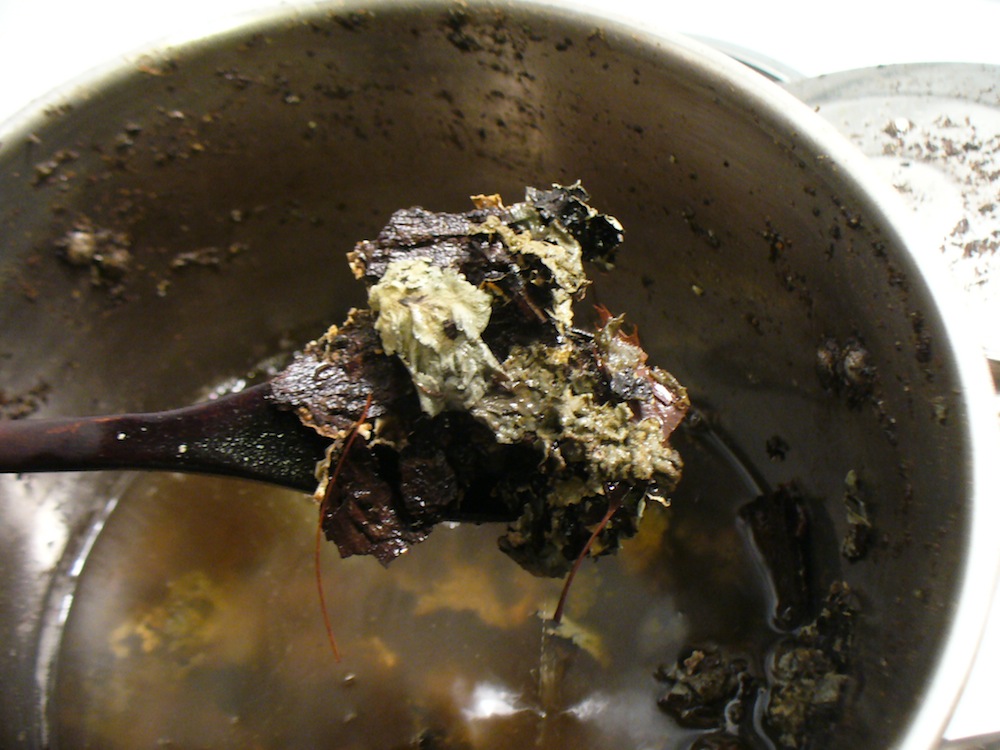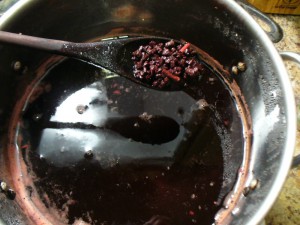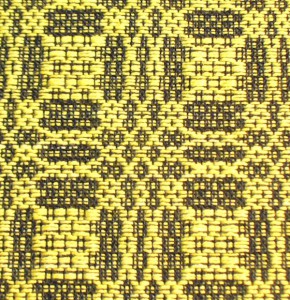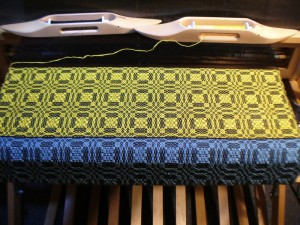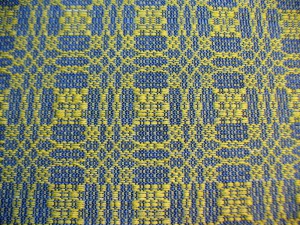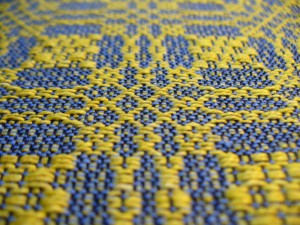In case you are looking for it, I just renewed Linen Heirlooms by Constance Dann Gallagher (Newton Center, MA: Charles T. Branford Company, 1968) from our local library. The author gathered and analyzed handwoven linen textiles from New England, New York state, and Pennsylvania, dating from the 19th century. Many people donated items for her study. Her book contains drafts for each of the items, based on her analysis of the cloth, some photos, and information about the donors and weavers. She also explains the operation of 19th century looms, the processing of flax, and the weave structures represented in the collection. Many of the pieces, if not all, were made of fine handspun linen yarns. (OK, not like the ancient Egyptians, but at 30-60 epi still quite fine.)
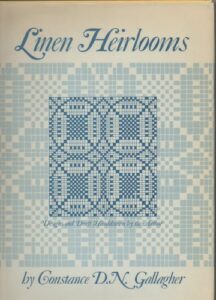
Having been a little bit obsessed with flax lately, I have really enjoyed reading it. I have been amazed and inspired by the hours of labor and creative energy that went into each piece, the care with which the pieces were saved by the families who inherited them, and the effort that Ms. Gallagher put into the study. Eventually this collection became part of the Smithsonian Division of Textiles in Washington D.C.
The author herself inspires awe, being a Master Weaver who, according to the blurb on the book jacket, “combined marriage and a career in bacteriology and various types of medical research,” along with motherhood. Her fine linen pieces won awards at NEWS (which I attended for the first time this summer!). I have also found the stories about the weavers and their families touching and inspiring.
One weaver whose story especially captivated me is Thankful Barron Taylor (1801-1896). Thankful lived in Washington, Vermont. By the way, she is not the Thankful Taylor from Tennessee who was famous for having a snake in her belly. And also by the way, Thankful Barron Taylor’s mother was from our fair city, Amherst, MA. 12/17/2023 Edited to note that the link to the Rutherford County Historical Society article about Thankful Taylor seems to have issues, so I removed it.
Thankful was educated at home. At the age of 15 she was inspired by a preacher who quoted from the New Testament in the original Greek. She wanted to read the Greek scriptures, and asked the preacher if she could borrow his books. He said, “No way, José,” or words to that effect. Many years later she was able to acquire said scriptures in Greek along with a Greek-Latin Latin-Greek lexicon. Excellent! The only problem was she now had to learn Latin as well as Greek to translate the darn thing. “No problemo,” she said (or words to that effect). “I can do that while I spin, hombre!”
To give you a taste of why I find Thankful’s story so sweet, here are some tidbits from an article by Washington, VT compatriot Lena Roberts, cited in the book. “[Thankful] had a predilection for metaphysical and scientific works. She is in sympathy with Spinoza. […] She gave much attention to chemistry […]. She hatcheled and spun the flax and wove the canvas, on which she wrought in colors the combining proportions of the elements.”
Here I’m picturing a needlepoint or crewel work periodic table, and I want one.
“The study of botany, zoology and biology, with the aid of a microscope, have been pursued with avidity.” This in addition to raising a family and all the daily labors of a household. She earned $12 (which must have been a lot of cash in those days) to buy a dictionary by spinning yarn for several weeks.
According to an article from the Boston Globe in 1892, “[…] [A]fter the spinning wheel had earned the books, it had all the family to provide for. So study and work went hand in hand. The old lady would sit at her wheel, busily spinning, with her Latin grammar and her Greek grammar, and her Worcester’s dictionary propped open before her, and through the long afternoons the crooning conjugations of amo would mingle with the drooning whirr of the spinning wheel.”
OK, I’m sure this account is romanticized, but I still love Thankful Barron Taylor. Her pieces in the collection include a point twill and two 5 harness spot Bronson designs. She lived to the ripe old age of 95; December 17th, 2011 will mark the 115th anniversary of her death. Thank you, Thankful!

